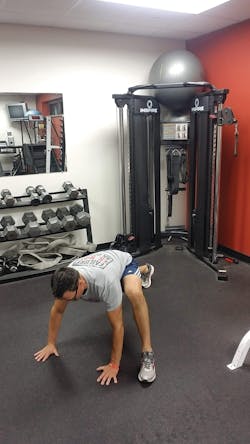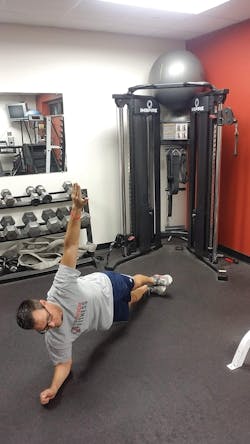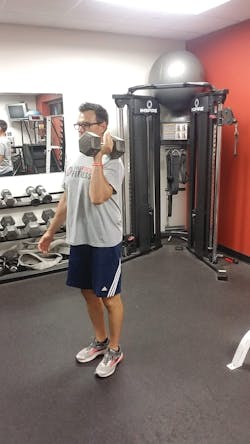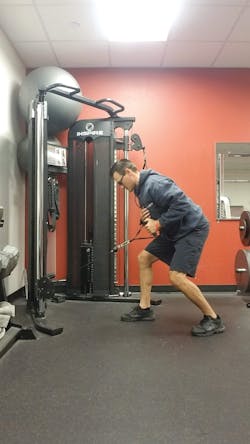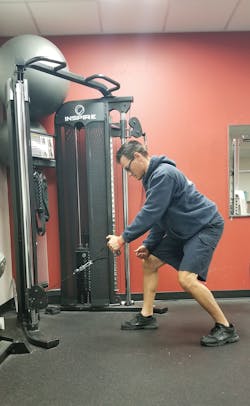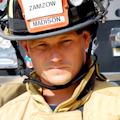Consider this: You and your crew are dispatched to a multi-unit dwelling with a reported fire on the second floor. As you arrive, your incident commander does the size-up and tells your crew to pull a hoseline and prepare for fire attack. The driver immediately works to establish a water source as you and your partner pull a hoseline to the front door. As you begin your task, there are a lot of things to consider—what size line, how much hose will you need, what obstacles will you encounter, etc. The one thing that often isn’t considered is the amount of energy and the fitness level that are required to carry out the task of fire attack.
One of the most physically demanding things a firefighter must do is advance a charged hoseline. The hoseline is heavy, and, usually, conditions aren’t very favorable. High heat, lots of objects to maneuver around, all coupled with the weight and stress of the hoseline, make this task one of your most challenging.
You can’t hide your lack of fitness during the hoseline advancement task. I witnessed professional football players struggle with this task. Noted, these athletes weren’t fully trained nor were they in an immediately dangerous to life and health environment; nevertheless, the amount of strength, power and cardiovascular capacity that it took them to accomplish the task gave them a new-found appreciation for the physical challenge that it presents.
Bottom line: The fire attack is a daunting assignment, particularly if you aren’t functionally fit and physically prepared to handle it. The question that I always am asked during seminars (Firehouse Expo, Firehouse World) is, “If this is the hardest thing we do as firefighters, how do you train for it?” The first step is to create a consistent functional fitness program.
Injuries occur on the fireground, some of which can’t be prevented: “stuff happens.” However, research confirms that deconditioned firefighters are more likely to get injured than those who are in condition.
Consistency and planning are the key when it comes to fitness; working out occasionally, without a goal or purpose, can lead to a lack of progress, to frustration and, ultimately, to injury or death, particularly in the case of fire attack.
The second step is to perform functional movements that transfer to improving performance and reducing injury. Hoseline advancement requires a tremendous amount of functional lower and upper body strength, power, core stability and stamina.
To train properly for the task, we must break down the movements and muscle groups that are required to perform it and then select exercises that complement and challenge these muscles.Spiderman and plank
Advancing hoseline requires mobility and flexibility. The terrain in which this task is performed is very unpredictable. There are objects in our way, and, often, we are moving in multiple directions and in different stances. One way to prepare for the unpredictable nature of fire attack is to be mobile and flexible. A great exercise that works on mobility, particularly around the hips, is the spiderman stretch.
To perform the spiderman stretch, assume a push-up position, with your hands under your shoulders. Step forward with your left leg, to outside of your left hand. Drive your hips forward into a stretch, holding this position for at least 3 seconds. Return to the starting position, and repeat with your right leg. Continue in alternating fashion for 5–10 reps for each side. This is a great exercise to perform before any training or workout.
Another physical attribute that’s needed when advancing hoseline is core strength. Please note that when I talk about core strength, I am not referring to six-pack abs but, rather, the strength of the underlying muscles of the torso, which help to determine posture and to prevent back injury. Six-pack abs might look good in the calendar, but they can’t help you to move heavy fire hose unless all of the muscles that are underneath them are working together and are strong.
A great core exercise that will help any firefighter to prepare for the fire attack is the rotational plank. This exercise challenges the core muscles in different planes and helps to strengthen the muscles around the spine to protect it from injury. This exercise also helps you to maintain your position and posture when the forces of flowing water are applied.To perform the rotational plank, start in a low plank position with your weight on your toes and forearms. Slowly, lift your right hand, rotating onto your side, so you’re in a side plank (your feet will turn slightly, too). Hold this position for 2–3 seconds, and then return to center (starting position). Pause for 1 second, and then repeat on the other side. Try to perform five planks on each side for 2–3 sets.
Lower body strength and stamina is a must when you perform any hoseline advancement task. A strong core can help you to protect your spine and maintain good posture; good lower body strength and balance will help you to advance the hoseline.
To perform the weighted offset reverse lunge, hold a dumbbell, kettlebell or a sandbag in one hand and lift it up to shoulder height. With the weight on your shoulder, make sure that you stand up straight. Take a step backward with the leg that’s opposite of the side on which you’re holding the weight, and lower your body until your back knee is just above the ground. Press your feet to the ground to rise back up to the starting position, and repeat. Perform all of the reps on this one side. Once you’re finished with your reps on that side, switch the weight to the other shoulder and lunge backward with the opposite leg. Try to perform 5–10 reps with each leg, making sure that you maintain good posture with each rep.
Grip and press
You can have all of the mobility and core and lower body strength in the world, but it doesn’t matter if you don’t have the grip strength to hold on to the hoseline as you advance it.
Grip strength usually is one of the first attributes to fatigue. However, it’s often overlooked and not addressed during most workouts. That said, it isn’t very difficult to incorporate exercises that promote grip strength. All you need to do is grab some heavy weights and carry them for a set distance or time. Any carry exercise not only challenges the “grip” muscles but also aids in developing a strong core and balance.To perform the farmer’s carry, grab some type of weight (dumbbell, kettlebell or even foam buckets) in both hands. Stand tall with the weights held by your sides. Keep your shoulders tight and your back straight. Take short, quick steps as you walk a set distance or for a certain amount of time. Start with the weight that you can control and try to walk 40–50 feet or for 20 seconds. Adjust the weight as needed to add more of a challenge.
Every step of advancing hoseline requires strength—strength of the core, the legs and the upper body. Depending on your position on the line, you must have the grip and upper body strength to push or pull the hoseline. The nozzle position must be able to hold the hose out in front and push the line during advance. The corner, or secondary, firefighters might be in a position in which they need to pull the hose around corners and upstairs to support the crew members who are in front of them. Either position requires coordination of upper and lower body strength combined with core stability.
The one-arm cable press and the one-arm cable row are exercises that mimic the upper body demands that are required in hoseline advancement and should be a staple in every firefighter’s workout program.To perform the one-arm cable press, stand in a staggered stance in front of a cable station, facing away from the weight stack. With the handle attachment positioned at your chest height, reach behind you and grab it with one hand, your palm facing outward. Hold the opposite hand straight in front of you for balance. Push your back hand forward, straightening it in front of your chest while pulling your front arm back to your shoulders. Pause, then reverse to return to the starting position. Perform all of the reps on one side before repeating on the opposite side. Try to perform 10 reps with each side, making sure to maintain good posture and control with each repetition.
To perform the one-arm cable row, stand in a staggered stance in front of a cable station, facing toward the weight stack. Attach a single handle to the low pulley cable, and position yourself a few feet away from the machine. Take the weight with one hand and bend your knees very slightly; place one foot back, so you’re in a staggered stance. Lean forward, keeping your back straight, and then pull the weight toward your body while contracting the muscles in the middle of your back. Slowly return to the start position. Perform all of the reps on one side before repeating on the opposite side. Try to perform 10 reps with each side, making sure toStrategic planning and practice are key components to correctly and efficiently deploying and advancing hoseline. The same principles need to be applied to your fitness. A proper fitness plan that incorporates functional exercises, such as the aforementioned, are a must for any firefighter. Be proactive with your fitness, create and follow a plan, be consistent and always be ready for any fire attack.
About the Author
Aaron Zamzow
Aaron Zamzow is a firefighter/training officer for Madison, WI, Fire Department. He holds a bachelor’s degree in health/wellness and has 20 years of experience as a fitness trainer. He created Fire Rescue Fitness and authors programs that are aimed at getting fire rescue athletes fit for duty.

